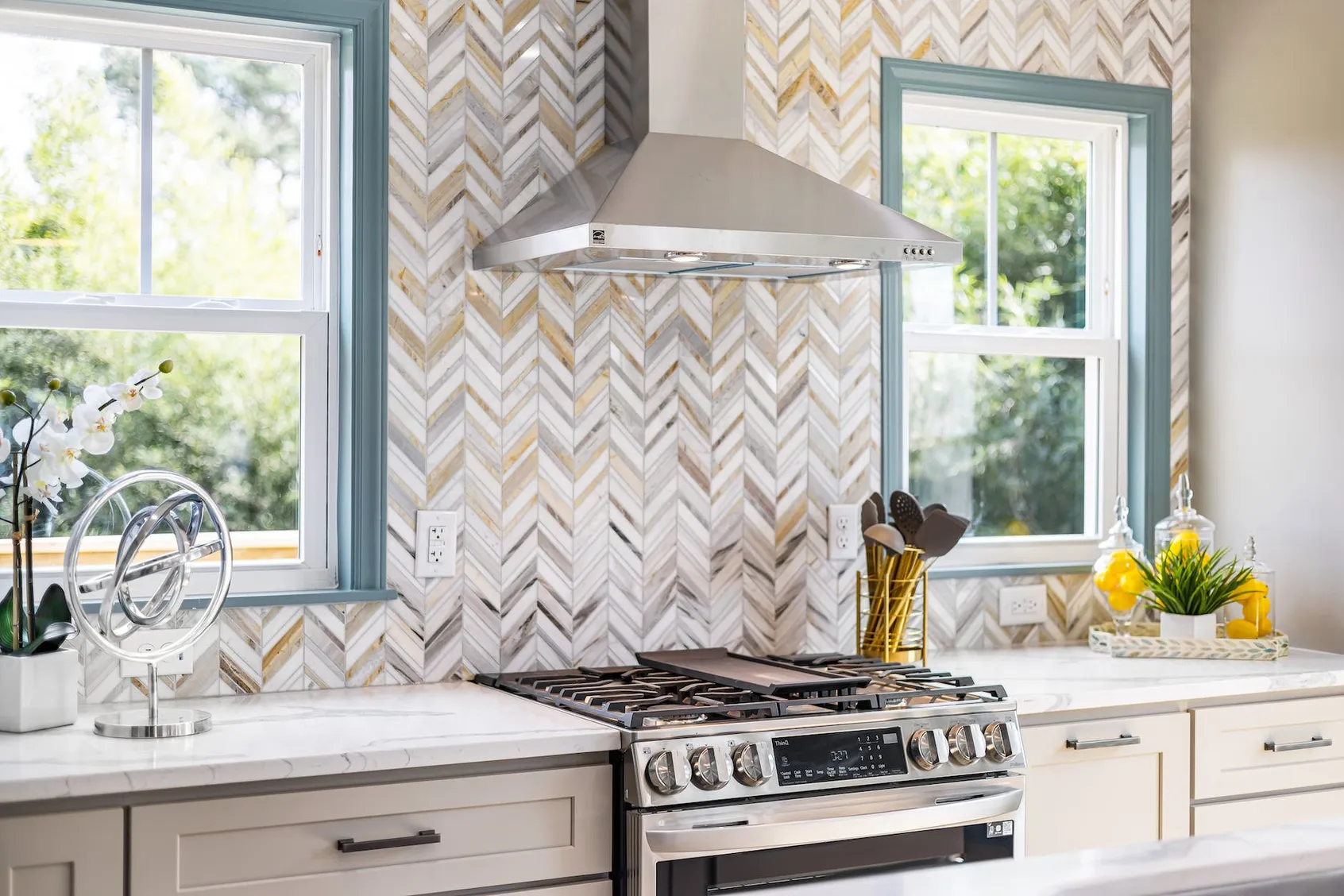Moving a kitchen is a big job and can be expensive. But how much does it cost to move a kitchen?
Because knowing the cost of a kitchen move ahead of time can help you budget for the project and decide if you want to hire a professional mover or do it yourself.
Understanding the costs associated with the move and creating a realistic budget to ensure the process goes smoothly is important. This article will provide a breakdown of the costs of moving a kitchen, including packing materials, labor, and truck rentals.
How Much Does It Cost To Move A Kitchen?
Moving a kitchen can be a daunting task and a costly experience. Many people question how much it will cost to move a kitchen.
The cost of moving a kitchen is determined by various factors, including the size of the kitchen, the distance of the move, the services you require, and the number of items you need to move. Furthermore, additional costs can be associated with necessary permits, insurance, and storage.
In general, the cost of moving a kitchen can range from a few hundred dollars to several thousand dollars, depending on the size of the kitchen and the complexity of the move. On average, the cost of relocating a kitchen ranges from $50,000 to $90,000.
The largest expense associated with moving a kitchen is typically the labor cost. Moving a large kitchen with many items, such as appliances and cabinets, can take many hours and require the help of professional movers. Furthermore, heavy and bulky items may require a truck or trailer. The cost of renting a truck or trailer may also need to be considered.
In addition to labor costs, the cost of moving a kitchen may include the cost of packing materials, such as boxes, tape, and bubble wrap. This cost is typically minimal but should still be taken into consideration.
Additionally, if you are moving a kitchen to a new home, you may need to purchase new appliances and other items. This cost will vary depending on the size of the kitchen and the type of appliances you purchase.
Finally, if you are moving a kitchen across a long distance, you may need to factor in the cost of permits and insurance. Some states require permits for moving large items across state lines, and you may need to purchase insurance to protect your belongings during the move.

Preparing Your Kitchen For Moving
Preparing your kitchen for moving can be a daunting task. The first step is to ensure your kitchen is safe and secure for the move. This includes ensuring that all hazardous items are properly disposed of and that all appliances and other items are properly disconnected and/or secured.
Once all these tasks have been completed, you can begin preparing for the actual move. This includes packing up all of the items you want to move, such as dishes, cookware, and small kitchen appliances, as well as ensuring that your kitchen is ready for the movers to handle.
Calculating Moving Costs
When it comes to moving a kitchen, there are several factors to consider to calculate the cost accurately. The size of the kitchen, the distance of the move, the type of items to be moved, and the cost of packing materials will all influence the cost of the move. While it can be difficult to accurately estimate the cost without contacting a professional mover, it is possible to get a general idea of the expenses likely to be incurred.
The cost of the move will depend on the size of the kitchen and the distance of the move. For local moves, the cost will likely be determined by the number of man-hours required to complete the move. For long-distance moves, the cost will be affected by the cost of fuel and other factors.
The cost of packing materials will also be a factor when calculating the cost of the move. Moving blankets, bubble wrap, tape, and other materials are necessary to ensure the items are properly secured for the move. The cost of materials will vary depending on the size of the kitchen and the type of items that need to be moved.
In addition to the cost of the move and packing materials, additional costs may be associated with the move. These may include the cost of a moving truck, storage fees for items that cannot be moved immediately, and any additional labor costs that may be incurred.
Selecting The Right Moving Company
Choosing the right moving company can make all the difference in ensuring a smooth and stress-free move. Here are some tips to help you select the right moving company:
- Research the company: Before hiring a moving company, do your due diligence and research the company thoroughly. Look for reviews, check their credentials and licensing, and ask friends and family members for recommendations.
- Get multiple quotes: Get quotes from at least three moving companies before deciding. This will give you an idea of the average cost of your move and will help you make an informed decision.
- Ask about insurance: Make sure the moving company you choose is fully insured, and ask about the level of coverage provided. This will give you peace of mind knowing that your belongings are protected.
- Check for hidden fees: Ensure you understand all the fees associated with your move and ask about any additional fees that may be added later. This will help you avoid any surprises on the day of the move.
- Communication is key: Make sure the moving company communicates clearly and promptly with you throughout the process, from the initial consultation to the day of the move. This will help ensure a smooth and stress-free move.
Packing Kitchen Items For The Move
Packing kitchen items for the move is one of the process’s most important and time-consuming parts. It is important to ensure that all of the items are properly packed to stay safe during the move.
Items such as plates, bowls, and glasses should be packed carefully in boxes and wrapped in bubble wrap to ensure they don’t break during transport. Utensils should be stored in plastic bags or containers to keep them safe and organized.
Larger items such as refrigerators and ovens should also be packed properly and secured with straps or bubble wrap. Moving blankets can also ensure the items stay safe and secure during the move.
It is also important to make sure that all items are labeled so they can easily be identified upon arrival. All items should be packed and ready to move before the moving truck arrives to avoid any delays.

Choosing The Right Moving Insurance
When moving a kitchen, ensuring you have the right moving insurance is important. If something happens to your furniture or appliances during the move, you want to ensure you are covered.
- The first step is to determine the value of your belongings. This will help you decide how much coverage you need and what type of policy to purchase. It’s important to remember that moving insurance does not cover the cost of repair or replacement if something gets damaged during the move.
- The next step is to decide on the type of policy you need. If you are moving a kitchen, you will likely want to purchase full-value coverage, which will cover the full cost of repair or replacement if something is damaged. If you are only moving a few items, you may get away with a basic policy, which will only cover a percentage of the repair or replacement cost.
- Most insurance companies will also have additional coverage options, such as coverage for lost or stolen items. Discuss these options with your insurance provider so you know exactly what your policy will cover.
- You need to consider the cost of the policy. The cost of moving insurance will vary depending on the value of your items, the type of coverage you select, and the length of the coverage. Generally, you can expect to pay between 1-2% of the value of your items for moving insurance. Shopping around and comparing prices is important to ensure you get the best deal.
Unpacking & Setting Up Your Kitchen In The New Home
Unpacking & setting up your kitchen in the new home is one of the most time-consuming and expensive parts of moving a kitchen. This includes unpacking your kitchen items, such as dishes, utensils, and appliances, and setting them up in the new space.
Depending on the size of your kitchen, this may require hiring professional movers, renting a truck to transport the items, and purchasing packing materials. If you plan to unpack and set up yourself, you may need to rent moving equipment, such as dollies, hand trucks, and furniture blankets.
Another expense to consider is the cost of disconnecting and reconnecting appliances. Professional movers can handle this task for you, although you may also be able to do it yourself.
If you need to hire a professional, this can add to the overall cost of the move. You may also need to pay for additional services, such as disconnecting and reconnecting gas and water lines, as well as any repairs or replacements that may be needed for the appliances.
Finally, if you are moving to a new location, you may need to purchase new kitchen furniture, fixtures, and accessories. Depending on your kitchen type, you may need to replace cabinets, countertops, lighting, and flooring. This can add to the overall cost of the move, so it’s important to factor this into your budget.
Disposing Of Kitchen Items That You Don’t Want To Take With You
One of the biggest expenses of moving a kitchen is disposing of the items you don’t want to take. This includes kitchen appliances, cabinets, countertops, and other fixtures.
Depending on the size of your kitchen, you may need to rent a dumpster or hire a professional hauling service to come and haul away the items. Disposing of kitchen items can range from a few hundred to several thousand dollars.
If you are using a hauling service, they will typically charge a fee based on the number of items they are hauling away. This can range from a few hundred dollars for smaller items to several thousand for large appliances, such as refrigerators and stoves. If you rent a dumpster, the cost can range from around $100-300 for a small dumpster to $500-1000 for a larger dumpster.
It is important to note that the cost of disposing of kitchen items may also depend on your location. Some cities may have regulations that require certain items to be disposed of in a certain way. In addition, some municipalities may also have additional fees for disposing of certain items. It is important to research local regulations and fees before disposing of kitchen items.
Finally, it is important to consider the cost of any necessary repairs or replacements that may be needed after the kitchen has been moved. This may include replacing broken appliances, repairing cabinets, or replacing countertops. If you are replacing certain items, you may also need to factor in the cost of purchasing new items.
Moving Kitchen Plumbing To A New Location
Moving kitchen plumbing to a new location can be laborious and expensive. Depending on the complexity of the job and the distance the plumbing needs to be moved, the cost of moving kitchen plumbing can range from a few hundred to several thousand dollars.
- The first cost you’ll need to consider is the cost of the materials, which will depend on the type of plumbing and the distance it needs to be moved. You’ll need to purchase piping, fittings, and valves for an average kitchen. You may also need to purchase new appliances, such as a dishwasher if the current ones are incompatible with the new plumbing location. Additionally, you’ll need to factor in the cost of any additional tools or equipment needed to complete the job.
- The second cost you’ll need to factor in is the cost of labor. Depending on the job’s complexity, you may want to hire a qualified plumber to do the work. Professional plumbers typically charge by the hour, so you’ll want to get an estimate of how many hours it will take to complete the job. Additionally, you may need to factor in the cost of any permits required for the job, which can vary depending on your municipality.
- The third cost you’ll need to factor in the cost of any additional services you may need to hire. For example, if you’re moving the kitchen plumbing to a new location, you may need to hire an electrician to rewire the kitchen. You may also need a contractor to install new cabinets or counters.

Common Mistakes To Avoid When Moving A Kitchen
Moving a kitchen can be daunting, but with proper planning and execution, it can be done seamlessly. Here are some common mistakes to avoid when moving a kitchen:
- Not measuring your new space: Before moving your kitchen, measure your new space carefully. This will help you determine what appliances and furniture you can bring and what you need to leave behind.
- Not labeling boxes: When packing up your kitchen, label each box clearly. This will save you time and hassle when unpacking everything in your new home.
- Not packing fragile items properly: Fragile items such as glasses and plates need to be packed carefully to avoid breakage during the move. Use bubble wrap or packing paper to cushion them and pack them tightly in boxes.
- Not hiring professional movers: Moving a kitchen requires a lot of heavy lifting and specialized equipment. Hiring professional movers will ensure that your items are packed and transported safely.
- Not disconnecting appliances properly: Before moving your appliances, disconnect them properly. This means turning off the power, water, and gas supply and securing loose parts.
Avoiding these common mistakes will help you move your kitchen easily and avoid any mishaps along the way.
Tips For Making Your Kitchen Move Easier
Moving a kitchen can be a stressful and expensive process. Planning, budgeting properly, and preparing for hidden costs are important. With the right preparation and care, you can make your kitchen move easier and less costly. Here are some tips to keep in mind when budgeting for a kitchen move:
- Start by decluttering your kitchen. Get rid of any items you no longer use or need. This will help you reduce the number of items you need to pack and transport to your new home.
- Plan and set aside enough time to pack your kitchen. Clear out a space in your kitchen to stack your boxes and packing materials. This will help you stay organized throughout the packing process.
- Use sturdy boxes and packing materials to protect your items during the move. Pack fragile items in bubble wrap or newspaper securely in boxes. Label each box with a detailed list of its contents.
- Consider hiring professional movers for your kitchen appliances, such as refrigerators, dishwashers, or ovens. This will ensure that they are moved safely without being damaged.
- Make sure to unpack your kitchen items before arriving at your new home. This way, you’ll be able to cook and eat comfortably immediately.
How Much Does It Cost To Convert A Room Into A Kitchen?
The cost of converting a room into a kitchen can vary widely depending on the project’s scope and materials. Some factors to consider include the size of the room, the existing plumbing and electrical systems, and the types of appliances and finishes you want to install.
On the low end, a basic kitchen remodel can cost around $10,000-$15,000. This typically includes installing new cabinets and countertops, updating the plumbing and electrical systems, and adding basic appliances like a stove and refrigerator.
On the high end, a complete kitchen renovation can cost $50,000 or more. This might include custom cabinetry, high-end appliances, and luxury finishes like granite or marble countertops.
Ultimately, the cost of your project will depend on your specific needs and preferences. Getting several quotes from reputable contractors and carefully considering your budget before starting any renovation project is important.
How Difficult is To Move A Kitchen To A Different Room?
Moving a kitchen to a different room can be a complex process that requires careful planning and execution. Here are a few factors that can affect the difficulty of this project:
- Plumbing and electrical connections: Moving a kitchen to a different room often involves relocating plumbing and electrical connections. This can be challenging if the new location doesn’t have easy access to these connections or if the existing connections need modification.
- Structural changes: Depending on the project’s scope, you may need to change the new room to accommodate the kitchen. This can include removing walls or adding new ones, installing support beams, or reinforcing the floor to support the weight of appliances.
- Appliance installation: Moving a kitchen to a new space often involves installing new appliances, such as a stove, refrigerator, and dishwasher. This process can be complicated, requiring precise measurements and careful installation to ensure the appliances function properly.
Overall, moving a kitchen to a different room can be a difficult and time-consuming project. Working with experienced contractors and designers who can help you navigate the process and ensure that the result meets your needs and budget is important.
Conclusion
In conclusion, the cost of moving a kitchen can vary greatly depending on the size of the kitchen and the distance it needs to be moved. It is important to consider the cost of labor, packing materials, equipment rentals, and other costs associated with the move. To get the most accurate estimate of the cost of moving a kitchen, it is best to get quotes from several local moving companies. This will ensure that you get the best deal and a smooth move.
Frequently Asked Questions:
Can a kitchen be moved to another room?
Yes, a kitchen can be moved to another room. Depending on the size and scope of the project, you may need to hire a professional contractor to help with the move.
Is it expensive to move a kitchen sink?
The cost of moving a kitchen sink will depend on various factors, including the sink’s size, the plumbing’s complexity, the distance of the move, and any additional materials or services that may be needed. Generally, you can expect to pay anywhere from $100 to $500 or more for the job.
How easy is it to move a kitchen in a flat?
Moving a kitchen in a flat can be quite a challenge depending on the size of the kitchen and the layout of the flat. It may be relatively easy to move if the kitchen is a small galley kitchen with few appliances. However, if it is a large kitchen with a lot of appliances and cabinetry, it may be much more difficult and require some professional help.
How long does it typically take to move a kitchen?
It typically takes between two and four days to move a kitchen. This can vary depending on the kitchen size and the movement’s complexity.
What is the best way to ensure a successful and stress-free kitchen move?
Planning and staying organized are important to have a successful and stress-free kitchen move. This can be done by making a detailed list, creating a timeline, assigning tasks, labeling boxes, keeping a record of items, and leaving time for cleaning and organizing the new kitchen.
Are there any special considerations to consider when planning a kitchen move?
Yes, there are several special considerations when planning a kitchen move. Ensuring all appliances and equipment are properly disconnected and safely transported to the new location is important. It may also be necessary to hire professionals for this task. Also, all kitchenware, such as dishes, glasses, and utensils, should be properly labeled and packed to prevent damage. Additionally, it may be necessary to plan for temporary kitchen facilities to continue preparing meals during the move. In contrast, the kitchen is being unpacked and set up in the new location.
What types of materials and supplies are necessary for a successful kitchen move?
To have a successful kitchen move, one must have the proper materials and supplies, such as boxes, tape, labels, bubble wrap, and moving blankets. Having the right equipment, like dollies and hand trucks, and reliable helpers or a moving company is also important. Proper packing materials and cushioning are necessary for fragile items. With these things in place, the move can be made safely and efficiently.
